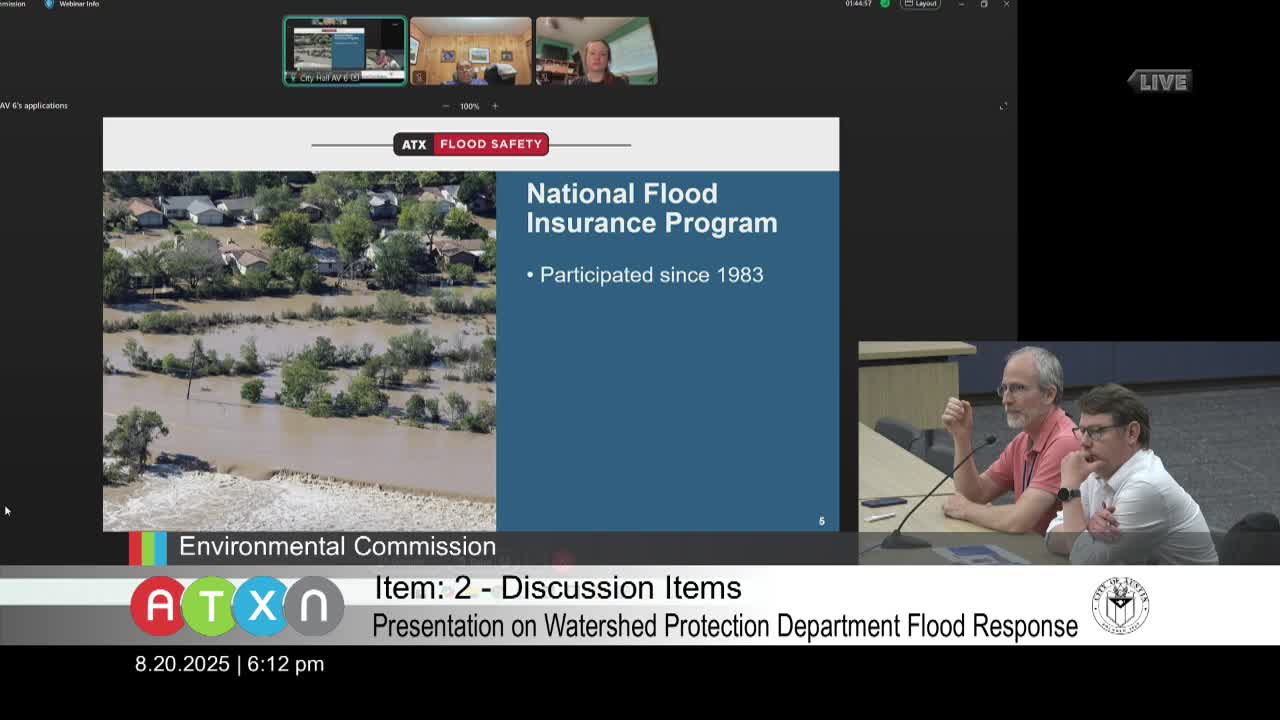Austin's Floodplain Regulations Established for National Flood Insurance Program Compliance
August 20, 2025 | Austin, Travis County, Texas
Thanks to Scribe from Workplace AI , all articles about Texas are free for you to enjoy throughout 2025!

This article was created by AI using a video recording of the meeting. It summarizes the key points discussed, but for full details and context, please refer to the video of the full meeting. Link to Full Meeting
During the meeting, officials highlighted that Austin's engagement with environmental regulations began in the mid-1970s, specifically in 1974, when the city recognized the need to protect areas identified as the 25-year flood point from development. This initiative coincided with the early efforts of the Federal Emergency Management Agency (FEMA) to establish the NFIP, which officially started in the late 1970s.
In 1981, Austin developed a set of regulations necessary for participation in the NFIP, which became effective in 1983. These regulations are crucial as they ensure that the city enforces minimum floodplain standards set by FEMA. Compliance with these standards is essential for maintaining participation in the NFIP, which provides residents access to federally backed flood insurance, a vital resource for those living in or near flood-prone areas.
The meeting also underscored the significance of NFIP participation for securing disaster funds and grants. Communities must be in good standing with the NFIP to qualify for public assistance from FEMA following significant flooding events. This connection between floodplain management and financial support highlights the critical role of effective environmental regulations in safeguarding the community.
Overall, the discussions at the meeting reaffirmed Austin's commitment to floodplain management and the ongoing need for robust environmental policies to protect residents and secure necessary funding for disaster recovery.
Converted from Austin - Environmental Commission meeting on August 20, 2025
Link to Full Meeting
Comments
View full meeting
This article is based on a recent meeting—watch the full video and explore the complete transcript for deeper insights into the discussion.
View full meeting
